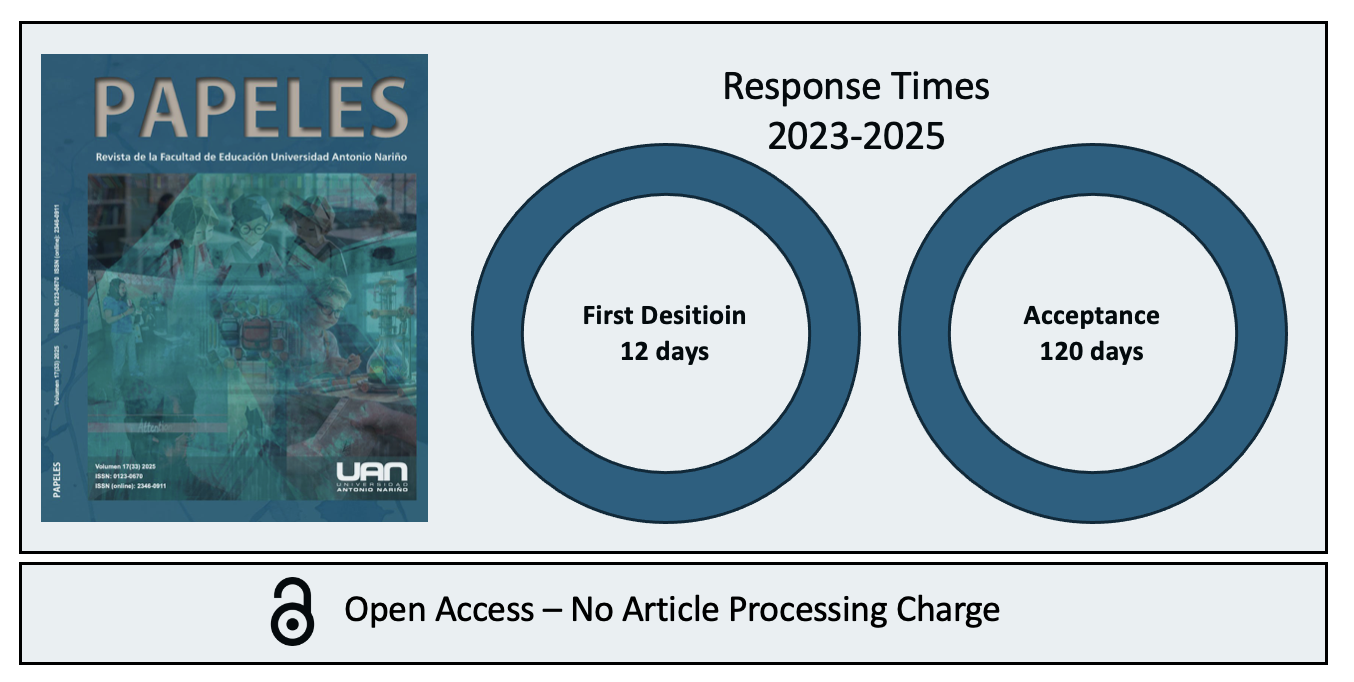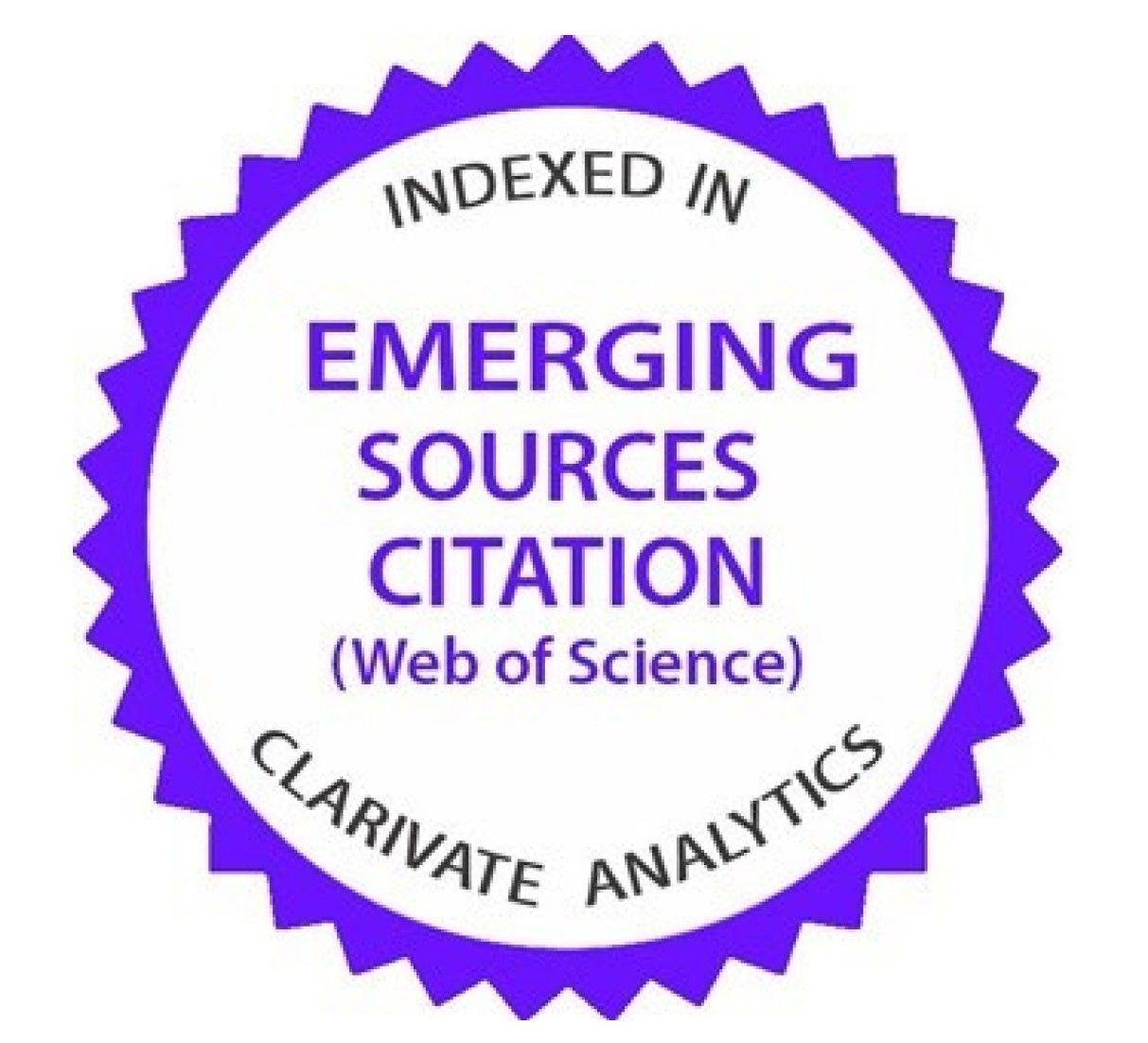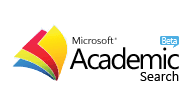CLIL en inglés como lengua extranjera en clases universitarias: incorporando mapamundis temáticos en el aprendizaje
DOI:
https://doi.org/10.54104/papeles.v9n17.470Keywords:
CLIL, geografía, mapas, estructura de un ensayo, aprendizaje significativoAbstract
El Aprendizaje Integrado de Contenidos y Lenguas Extranjeras (CLIL, por sus siglas en inglés) ha ganado cada vez más reconocimiento como una metodología para enseñar cursos regulares en las universidades colombianas, con el fin de fomentar el aprendizaje del inglés a través de materias académicas en las ciencias sociales. Este es un reporte sobre cómo realizar mapas temáticos para identificar el modo en que la información correlativa ha sido usada para desarrollar soportes para ensayos, los cuales se enfocan en asuntos sociales. Debido a que los estudiantes realizaron mapas temáticos para identificar la relación entre indicadores sociales, estos fueron capaces de mantener una tesis para los temas de sus ensayos a través de investigaciones en geografía. Por consiguiente, el ejercicio demostró el proceso simultáneo de aprendizaje sostenido por el CLIL, ya que los estudiantes adquirieron habilidades
para usar mapas y así respaldar una tesis en un ensayo.
Downloads
References
(1) Bernaus, M. & Gardner, R. C. (2008). Teacher motivation strategies, student perceptions, student motivation and English achievement. The Modern Language Journal, 92(3), 387-401.
(2) Bryan, N. & Habte-Gabr, E. (2010). Strategies for teaching geography electives in English to native Spanish speakers at a Colombian university. Latin American Journal of Content & Language Integrated Learning, 1(1), 1-14.
(3) Catalán, R. M. J. & Llach, M. P. A. (2017). CLILor time? Lexical profiles of CLIL and non-CLIL EFL learners. System, 66, 87-99.
(4) Czura, A., Papaja, K. & Urbaniak, M. (2016). Bilingual education and the emergence of CLIL in Poland. In CLIL Practice: Perspectives from the field, Modernizing Educational Practice: Perspectives in Content and Language, Edited by Katarzyna Papaja, Artur Świątek. Cambridge Scholars Publishing, 172-178.
(5) Markovic, L., Prnjat, Z. & Adelkovic, S. D. (2016). Geography Student’s perception on implementation of multiple intelligences in a CLIL course Research Highlights in Education and Science, 34-39.
(6) Marsh, D. (2002). Content and Language Integrated Learning: The European Dimension - Actions, Trends and Foresight Potential. http://europa.eu.int/comm/education/languages/index.html
(7) McDougald, J. S. (2009). The state of language and content instruction in Colombia. Latin American Journal of Content & Language Integrated Learning, 2(2).
(8) Morawski, M. & Budke, A. (2017). Learning with and By Language: Bilingual Teaching Strategies for the Monolingual Language-Aware Geography Classroom. The Geography Teacher, 14(2), 48-67.
(9) Papaja, K & Urbaniak, M. (2013). The role of a teacher in a CLIL classroom. Glottodidactica. An International Journal of Applied Linguistics, 40(1), 147-153.
(10) Rodriguez, M. (2011). CLIL: Colombian Leading into Content Language Learning. Íkala, Revista de Lenguaje y Cultura, 16(2), 79-89.
(11) Rodríguez de Moreno, E. A. (2010). Geografía conceptual. Enseñanza y aprendizaje de la geografía en la educación básica secundaria. Bogotá: Tercer Mundo Editores.
(12) Silva, M. R. P. (2017). La didáctica de la geografía una preocupación reciente en el contexto de la enseñanza de la geografía colombiana. Boletim Paulista de Geografía, 90, 77-96.
(13) Spada, N. & Tomita, Y. (2010). Interactions between type of instruction and type of language feature: A Meta-Analysis. Language learning, 60(2), 263-308.
(14) Zafeiriades, N. & Kosma, G. (2017). The Case for Geography through CLIL: Exploring the Linguistic and Intercultural Potential: CLIL implementation in foreign language contexts: Exploring challenges and perspectives Part II, 8(2), 24-34.
(15) Zambrano, G. B. (2003). Teacher talk at three Colombian higher education institutions. PROFILE Issues in Teachers' Professional Development, 4(1), 9-16.
Downloads
Published
-
Abstract427
-
PDF (Español)372
How to Cite
Issue
Section
License

This work is licensed under a Creative Commons Attribution-NonCommercial-ShareAlike 4.0 International License.






